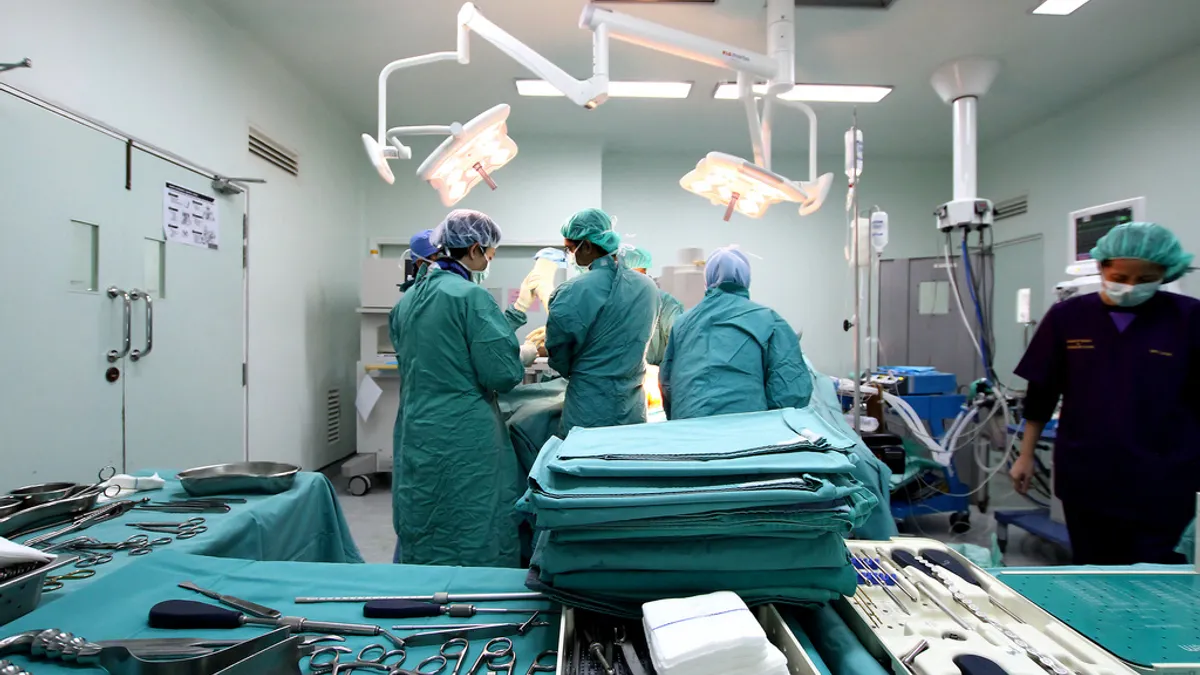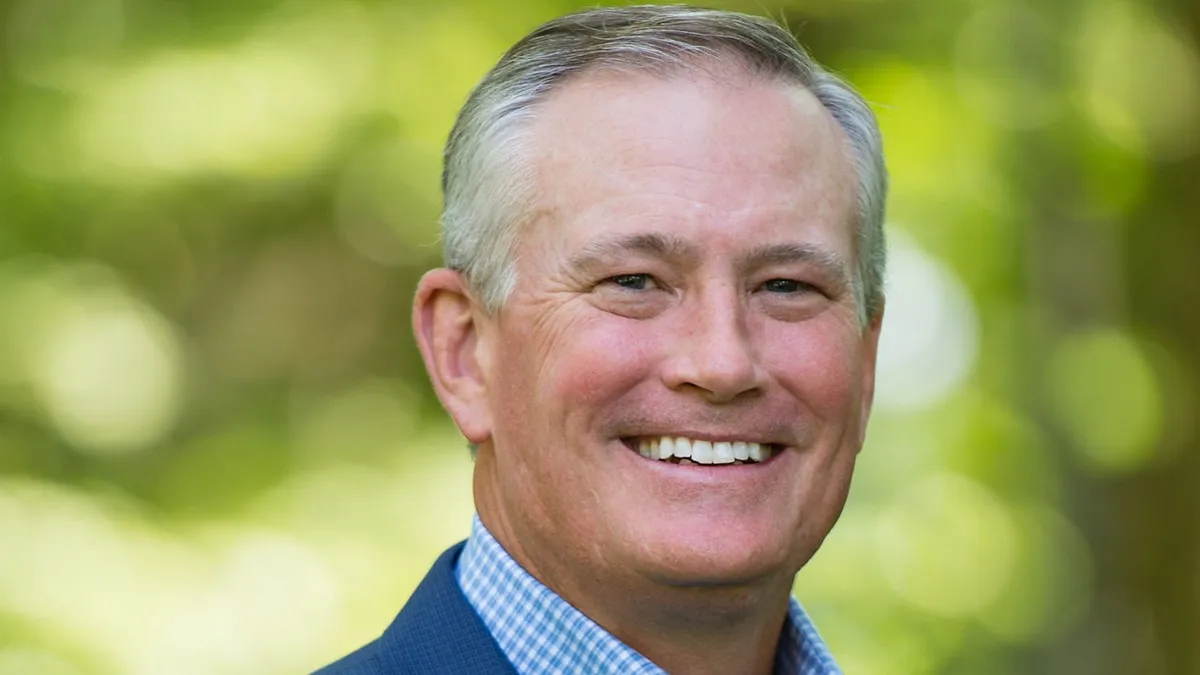As U.S. healthcare systems brace for record-setting weeks of COVID-19 cases to potentially reach new heights following Thanksgiving gatherings, additional hospitals have opted to place new restrictions on non-emergency surgeries.
By the end of last week, many hospitals — from Cleveland Clinic, to Mayo Clinic facilities in Wisconsin and Minnesota, to Advocate Aurora Health in Illinois, to St. Luke’s Health System in Idaho — had enacted volume restrictions, rescheduled cases, or outright stopped scheduling cases that required an overnight stay.
Since then, there have been further reports from across the country of disruptions to elective procedures, including at UW Medicine in Seattle, UofL Health in Louisville, Kentucky, and more Mercy Health locations.
While hospitals are widely regarded as being better equipped now than six months ago to simultaneously handle COVID-19 cases and routine services — good news for hospital and medtech finances alike — the dual stress of current virus resurgence and anticipated spread over the holidays is having a meaningful impact on capacity in some areas.
The alarming rise in COVID-19 cases prompted updated guidance Tuesday from the American College of Surgeons (ACS) on maintaining surgeries during the pandemic, an outline originally put out in April. ACS, again teaming with the American Hospital Association as well as the Association of periOperative Nurses (AORN) and American Society of Anesthesiologists, noted hospitals across the U.S. are "now reporting near or at bed and ICU capacity," although trends vary regionally.
The roadmap considers regional cooperation, supply chain concerns, COVID-19 testing within a facility, personal protective equipment availability, case prioritization and scheduling, how the pandemic affects preoperative care to post-discharge, data collection and management, as well as coronavirus-related safety and risk mitigation.
On the pre-procedure testing front, ACS says hospitals should take into account the present accuracy and availability of tests, as well as turnaround time to results. In the absence of timely test results, hospitals are advised to "reassess and implement evidence-based infection prevention techniques, access control, workflow and distancing processes."
That recommendation comes as testing infrastructure is showing new signs of strain. As of Nov. 24, Quest Diagnostics' average time to results was two to three days. For LabCorp, the most recent Nov. 20 update said the average was one to two days. Both are upticks from recent weeks. Neither the American Clinical Laboratory Association nor LabCorp and Quest break out the fraction of tests that go toward pre-procedure testing.
For ambulatory surgery centers, which have played an important role in working through the procedure backlog this year given their existing emphasis on elective care versus inpatient counterparts’ role in treating COVID-19, test availability is not necessarily a limiting factor.
"Since the very beginning, there has been limited availability for testing in different communities, so one of the things I think the healthcare community has done is not rely solely on testing as the panacea because there's still limitations with the accuracy of those tests and then obviously there's always a lag time," said Bill Prentice, CEO of the Ambulatory Surgery Center Association.
Prentice added that other precautions like self-quarantines for patients, masking, and limiting people in facilities created the "safety net" to ensure ASCs remain largely free of the coronavirus.
Some of those infection prevention measures add time to the overall procedure, meaning they're taking slightly longer than normal. But ASCs do currently have the capacity to take on more cases from hospitals that are overwhelmed by COVID-19, Prentice said. More of that case shift is happening now than earlier in the pandemic despite restrictions being fewer and farther between than in March and April, he noted, perhaps because some communities are experiencing higher levels of virus spread now than before.
ACS, AORN and the American Society of Anesthesiologists penned a letter this week to HHS, House and Senate leadership, and President-elect Joe Biden’s COVID-19 task force calling for "centralized coordinated governmental action" regarding an influx of new resources to support burnt out healthcare workers, federal leadership on procurement and distribution of supplies to help facilities no longer resort to "crisis standards of care," as well as transparency on a vaccine distribution plan.
One point of emphasis: heightened concern about healthcare worker wellbeing. In some areas, healthcare workers have been fighting the coronavirus for nearly nine months and a number of hospitals are reporting a strain on staff resources as COVID-19 exposures keep people out of work. For example, the Cleveland Clinic on Monday reported some 970 caregivers out of work due to active virus infections or quarantines.
"Many hospitals were back up to 125% of capacity just to make up the patients that had to be put off. And so, when you think you're over the hump and then suddenly you get hit with this again — it's been very, very hard for medical staff," said David Hoyt, executive director of the American College of Surgeons.
Lindsay Martin, an instructor of health policy and management at the Harvard T.H. Chan School of Public Health, echoed the importance of considering — and even attempting to quantify — healthcare workers' psychological wellbeing in making decisions about ramping up surgeries again.
"Any well-run organization should be able to fully have a pulse on how their team is doing," Martin said, with strategies as simple as asking staff about their confidence in their abilities to execute procedures well, comfort level with amount of practice they're getting, and fatigue.
Notably, ACS and its partners do not lay out specific metrics for hospitals to meet before re-instituting normal caseloads.
"Is there any magic number? Not really," Hoyt said. ACS believes decisions on surgical care adjustments should be made at "a local level driven by hospital leaders including surgeons and in consultation with state government leaders." Hoyt added it's a matter of hospitals being in a position where the incidence of new COVID-19 patients has stabilized, and bed availability is such that a hospital could support a routine operation or one with complications.

















